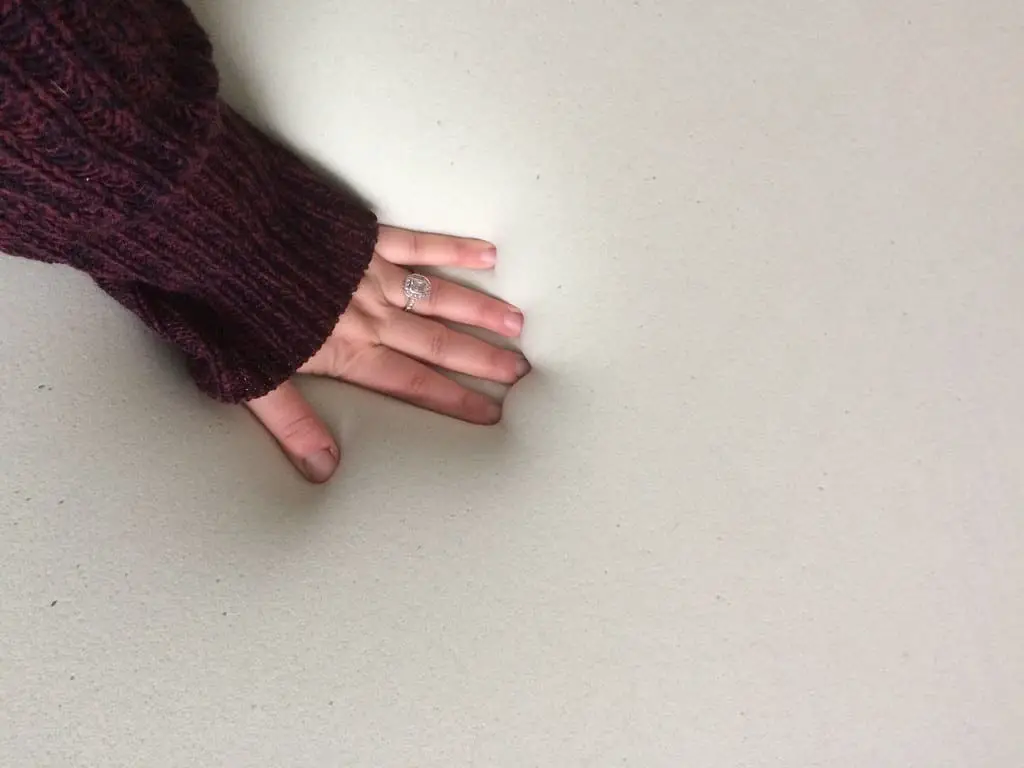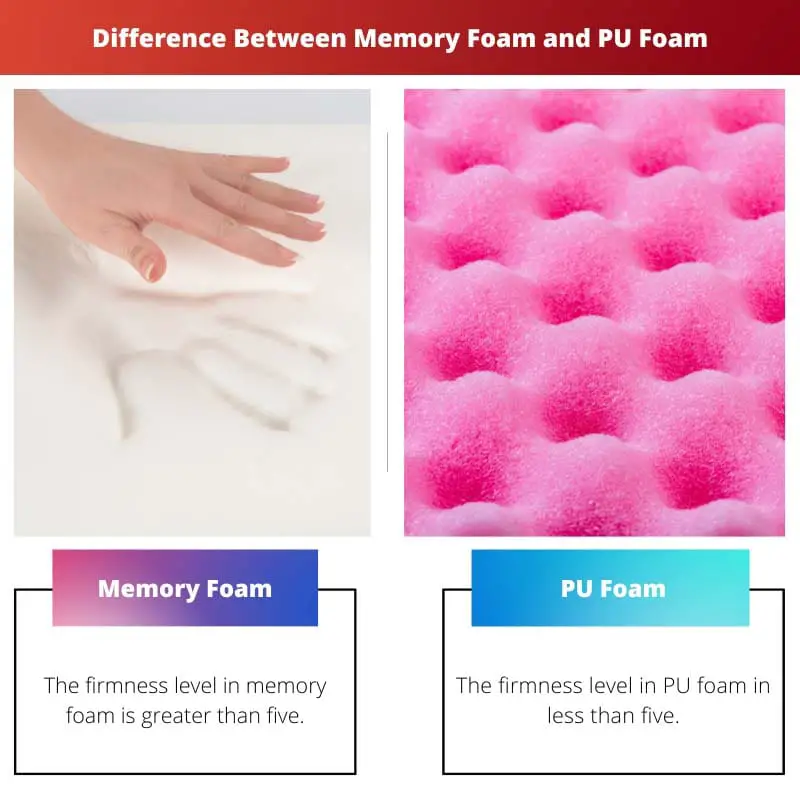Memory foam and PU foam are good mattresses for sleeping. Memory foam has many advantages when compared to PU foam.
In general medium-fit mattresses are highly recommended mattresses for good support. Memory foam and PU foam are two different foams which are produced using different materials.
Key Takeaways
- Memory foam is a viscoelastic material that conforms to the body and offers pressure relief, while PU foam (polyurethane foam) is a more rigid, high-density foam.
- Memory foam provides superior comfort and support in bedding and cushioning applications, while PU foam is commonly used for firm support and structural purposes.
- Memory foam tends to retain heat and has a slower response time, whereas PU foam is more breathable and responsive.
Memory Foam vs PU foam
Memory foam is a hard mattress. Orthopedic patients can use memory foam. Its hardness and softness also depends on the temperature. It will become hard if the temperature is cold. It will become a normal foam if the foam is hot. PU foam is a soft mattress. Another name of PU foam is poly foam. Its level of firmness is less.

Memory foam is also called viscoelastic. The memory foam is rich in polyurethane with certain chemicals which increase the density and viscosity of the memory foam.
The air can move into the bubbles or cells present in the mattresses when it opens. The high-density foam reacts with the human body to make it soft in a few minutes.
The newer foams can easily recover their original shape. The internal structure of the material is responsible for the viscoelastic properties. And that creates several effects like pneumatic effect and relaxation effect.
PU foam or PUR foam expands as polyurethane foam. The PU foam consists of polymers. The polymers present in the PU foam are nothing but organic units.
In polyurethane wide range of starting materials like monomers are used. The chemicals present in the starting materials make polyurethane vary in physical properties which results in various applications.
Some properties of PU foams are rigid, adhesive, coatings, varnishes, flexible, and potting.
Comparison Table
| Parameters of comparison | Memory Foam | PU Foam |
|---|---|---|
| Firmness level | The firmness level in memory foam is greater than five | The firmness level in PU foam in less than five |
| Material | More denser | Less denser |
| Aches | The memory foam used for orthopedic patients | PU foam does not help in back pains |
| Cooling | Microgel method | Air pocket ventilation |
| Other names | Tempur-Pedic foam | Polyfoam |
What is Memory Foam?
Memory foam is also called low-resilience polyurethane foam. The foam gets its original shape by the effect called the network effect.
The porous material present in the foam will create the network effect which pushes against the structure with applied pressure.
The pneumatic effect, adhesive effect, and relaxation effect are the three important effects that are working against the network effect.
These effects will prevent the foam change to its original shape and applying like foam mattresses. The pneumatic effect is caused by time, the adhesive effect is caused by sickness, and the relaxation effect is caused by materials.
Every effect has separate purposes. The pneumatic effect structure the foam. The adhesive effect work against decompression. the relaxation effect work against expansion.
Glass transition temperature is responsible for the relaxation effect. The memory foam is temperature dependent and the glass transition temperature will be forcing the changes gradually.
If the temperature is too cold, then the foam becomes hard. If the memory foam is too hot, then it behaves like conventional foams.
Polymeric creep explains the physics behind the memory foam.
The comfort of the mattresses produced from the memory foam will be affected by the mechanical properties of the foam. The comfort and durability will be split between trade-offs.
Several memory foams have rigid cells which cause lower weight and easy recovery of the original position. The penetration of water can be prevented by a more dense or solid cell structure.
These solid structures provide better durability and a great appearance.

What is PU Foam?
PU foams are produced in traditional methods. By reacting the isocyanate polymers with polyol the PU foams are manufactured.
There are two types of monomers are present in the PU foams. The monomers present in the PU foams will react one after another and those monomers are called alternating copolymers.
Per molecule of PU-foams contains two or more functional groups which all are produced by the isocyanates and polyols. Around 25 million metric tons of Pu foams are produced in 2019.
The PU foams are considered commodity plastic.
The raw materials of PU foams are isocyanates, polyols, bio-derived materials, chain extenders, chain linkers, catalysts, and surfactants.
By mixing the two liquid streams the PU foams are produced. The polyol stream contains many things and the two streams are called polyurethane systems.
The PU foams have different names in North America and Europe. Depending on the chemicals added, a variety of densities and hardness are introduced in the PU foams.
There are two different types of catalysts used in polyurethane. The primary function of the catalyst is to enhance nucleophilicity.
Autocatalytic processes are also conducted in the production of the PU foams. When compared to other foams, the PU foams are not durable.
The primary use of the PU foams is high resiliency flexible foam seating. Rigid foam insulation panels, microcellular foam seals, and gaskets are some features of PU foams.
Main Difference Between Memory Foam and PU Foam
- Memory foam uses microgel infusion for cooling, whereas Pu foam uses air pocket ventilation for cooling.
- When compared to memory foam, PU foam has less bounce coefficient.
- When compared to memory foam, PU foams has less chemical contents.
- Memory foam is also called gel foam, whereas PU foam is also called poly foams.
- When compared to memory foam, PU foam has less level of firmness.

- https://pubs.rsc.org/en/content/articlehtml/2021/tc/d1tc01315g
- https://www.sciencedirect.com/science/article/pii/S0014305717302604
